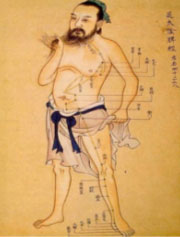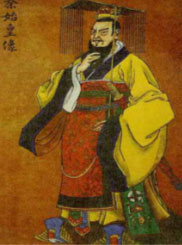Introduction

BEGINNING OF ACUPUNCTURE – 3000 YEARS OLD
It is quite common these days to hear about people turning to acupuncture as a last resort for relief from chronic health problems. The popularity of alternative therapies such as acupuncture is variable among developed countries, but public demand is strong and growing. In recent surveys published in the Journal of American Medical Association (1998), the percentage of the public reporting use of at least one alternative therapy in the U.S. increased from 38% in 1990 to 42% in 1997. Estimates available from Europe show the corresponding percentage to be much higher, particularly for acupuncture (British Medical Journal, 1994). A few years ago, the Food and Drug Administration estimated that 9 to 12 million acupuncture treatments were being performed annually, and this estimate is surely much higher now.

What is Acupuncture?
HUANG DI – FATHER OF ACUPUNCTURE
Acupuncture was developed by the Chinese and has been in use for more than 3000 years. The practice is part of a larger integrated system, the Traditional Chinese Medicine (TCM) system. Simply put, acupuncture is performed by stimulating designated points on the body—through our finger touch and releasing the energy.
According to the Chinese, there is a network of energy (called chi or qi) that flows through the body and connects acupuncture points through different channels called meridians. These channels are related to specific internal functions, and any imbalance in the flow of energy will cause a disease process. Therefore, the purpose of TCM and acupuncture assessments is to detect energy imbalance. Acupuncture assessments are made according to diagnostic categories of energy (qi) flow, as measured by a complete medical history—examination of pulse, tongue, and other organs, as well as other observations. Any imbalance of energy detected through these comprehensive assessments is then corrected by application of acupuncture at carefully selected points. This restores the human body to normal health.














